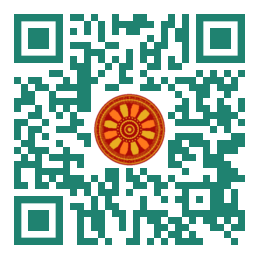
:: International Transaction Journal of Engineering, Management, & Applied Sciences & Technologies
http://TuEngr.com

ISSN 2228-9860
eISSN 1906-9642
CODEN: ITJEA8
FEATURE PEER-REVIEWED ARTICLE
Vol.13(5)(2022) |
An Experimental Based Approach Using Artificial Intelligence Algorithm for Determining the Surface Roughness by Milling Process
 Afrim Gjelaj ,
Besart Berisha
(Faculty of Mechanical Engineering, University of Prishtina, Prishtina, KOSOVA),
Afrim Gjelaj ,
Besart Berisha
(Faculty of Mechanical Engineering, University of Prishtina, Prishtina, KOSOVA),
Wojciech Sitek (Faculty of Mechanical Engineering, Silesian University of Technology, Gliwice, POLAND).
Disciplinary: Mechanical Engineering.
doi: 10.14456/ITJEMAST.2022.86
Keywords:Milling; Surface roughness model; Testing of material; Optimization; Artificial intelligence.
AbstractSurface roughness plays an important role in the machining area. This work aims to investigate surface roughness with the use of main machining parameters. Steel C35 is used as workpiece material while performing experimental work with twenty-one experiments, and coolant is taken as constant. The experimental model considers two ways to analyze the surface roughness using Artificial Intelligence. The first is the measurement of surface roughness after machining, and the second is to compare the measurement in a theoretical way.Paper ID: 13A5B
Cite this article:
Gjelaj, A., Berisha, B., Sitek, W. (2022). An Experimental Based Approach Using Artificial Intelligence Algorithm for Determining the Surface Roughness by Milling Process. International Transaction Journal of Engineering, Management, & Applied Sciences & Technologies, 13(5), 13A5B, 1-12. http://TUENGR.COM/V13/13A5B.pdf DOI: 10.14456/ITJEMAST.2022.86
References
- Hanief M, Wani MF. Effect of surface roughness on wear rate during running-in of En31-steel: Model and experimental validation. Materials Letters. 2016;176:91-3. DOI: 10.1016/j.matlet.2016.04.087
- Pfeifer T, Kurokawa S, Meyer S. Derivation of parameters of global form deviations for 3-dimensional surfaces in actual manufacturing processes. Measurement. 2001;29(3):179-200. DOI: 10.1016/S0263-2241(00)00038-5
- Altintas Y, Budak E. Analytical prediction of stability lobes in milling. CIRP annals. 1995;44(1):357-62. DOI: 10.1016/S0007-8506(07)62342-7
- Simunovic G, Simunovic K, Saric T. Modelling and simulation of surface roughness in face milling. International Journal of Simulation Modelling. 2013;12(3):141-53. DOI:10.2507/IJSIMM12(3)1.219
- Sekulic M, Pejic V, Brezocnik M, Gostimirovic M, Hadzistevic M. Prediction of surface roughness in the ball-end milling process using response surface methodology, genetic algorithms, and grey wolf optimizer algorithm. Advances in Production Engineering & Management. 2018;13(1):18-30. DOI: 10.14743/apem2018.1.270
- Stephenson DA, Agapiou JS. Metal cutting theory and practice. CRC Press; 2018. DOI: 10.1201/9781315373119
- Flores V, Keith B. Gradient boosted trees predictive models for surface roughness in high-speed milling in the steel and aluminum metalworking industry. Complexity. 2019. DOI:10.1155/2019/1536716
- Bustillo A, Correa M. Using artificial intelligence to predict surface roughness in deep drilling of steel components. Journal of Intelligent Manufacturing. 2012;23(5):1893-902. DOI: 10.1007/s10845-011-0506-8
- Noghani, M, Bayat, O, Moghadam, O, Mehrizi, V. Effect of Various Microstructures Obtained from Heat Treatment on Machinability Behavior of Ti-6Al-4V Alloy. International Journal of Engineering. 2022;35(1):184-190. DOI: 10.5829/ije.2022.35.01A.11
- Mitutoyo. Europen Metrology Solutions from Mitutoyo. 2022. https://mitutoyo.eu/en_us (accessed January 2022).
- Kibbe, R, Meyer, R, Stenerson, J, Curran, K. Machine tool practices. 11th Ed.; Pearson, Boston, 2020:497-558.
- Orion. Narrow disc milling cutter HSSE Co 5: Type N. 2017. https://media.witglobal.net/stmedia/hahnkolb/documents/LANG_en/HK-14103365.pdf
- Matras A. Research and Optimization of Surface Roughness in Milling of SLM Semi-Finished Parts Manufactured by Using the Different Laser Scanning Speed. Materials. 2019;13(1):9. DOI: 10.3390/ma13010009
- Wang Y, Wang Y, Zheng L, Zhou J. Online Surface Roughness Prediction for Assembly Interfaces of Vertical Tail Integrating Tool Wear under Variable Cutting Parameters. Sensors. 2022; 22(5):1991. DOI: 10.3390/s22051991
- Navidi WC. Statistics for Engineers and sciences. 3rd Ed., McGraw-Hill, 2014:592-658.
- Liu J, Lu E, Yi H, Wang M, Ao P. A new surface roughness measurement method based on a color distribution statistical matrix. Measurement. 2017;103:165-78. DOI: 10.1016/j.measurement.2017.02.036.
- Narooei, KD, Ramli, R. Optimal Selection of Cutting Parameters for Surface Roughness in Milling Machining of AA6061-T6. International Journal of Engineering. 2022;35(6):1170-1177. DOI: 10.5829/ije.2022.35.06c.08
Other issues:
Vol.13(4)(2022)
Vol.13(3)(2022)
Vol.13(2)(2022)
Archives
Call-for-Papers
Call-for-Scientific PapersCall-for-Research Papers: ITJEMAST invites you to submit high quality papers for full peer-review and possible publication in areas pertaining engineering, science, management and technology, especially interdisciplinary/cross-disciplinary/multidisciplinary subjects.
To publish your work in the next available issue, your manuscripts together with copyright transfer document signed by all authors can be submitted via email to Editor @ TuEngr.com (please see all detail from Instructions for Authors)
Publication and peer-reviewed process:
After the peer-review process, articles will be on-line published in the available next issue. However, the International Transaction Journal of Engineering, Management, & Applied Sciences & Technologies cannot guarantee the exact publication time as the process may take longer time, subject to peer-review approval and adjustment of the submitted articles.